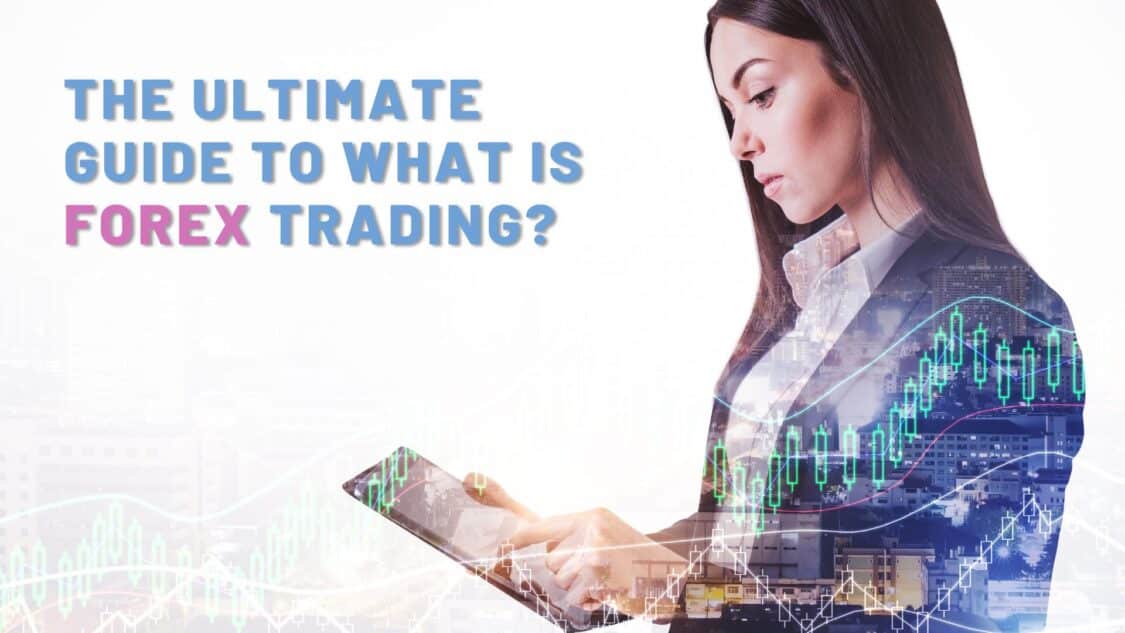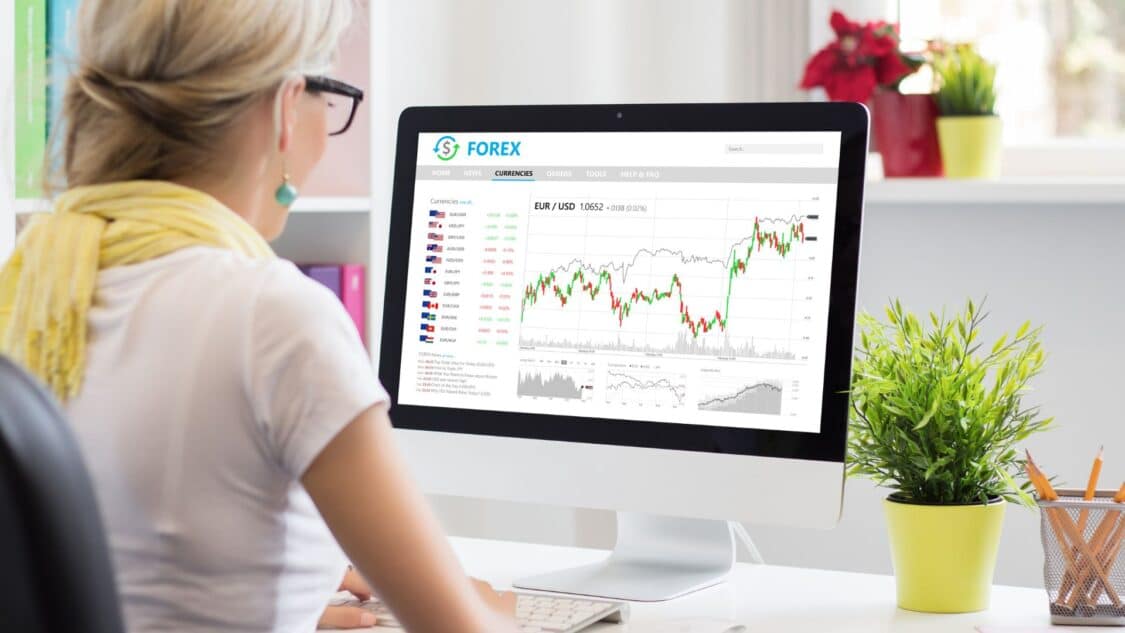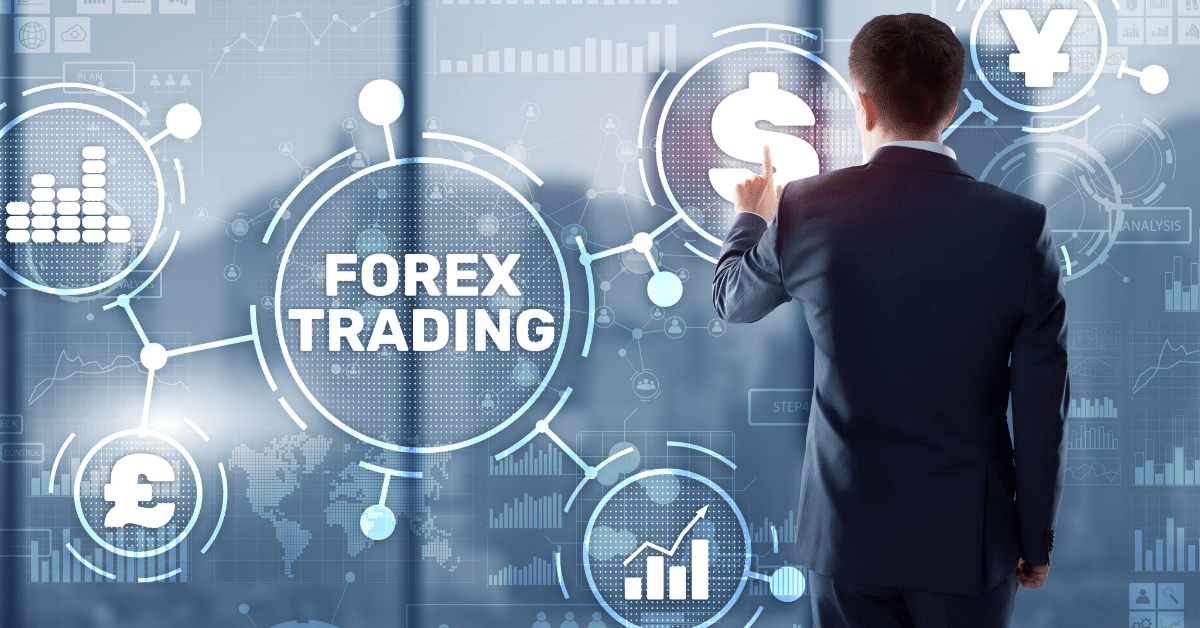- What is Forex trading?
- Forex Market vs. Other Financial Markets:
- 3 Ways to Trade Forex:
- What factors influence currency exchange rates?
- How do economic indicators and news releases impact Forex trading?
- What are some popular Forex trading strategies?
- What are the tax implications of forex trading?
- What are some best practices for managing risk in forex trading?
What is Forex trading?
What is Forex trading? trading stands for foreign exchange. It is the term used to explain the process of trading currencies from different countries against one another. What happens in this market determines the exchange rate given at banks for exchanging money. These exchange rates also can change based on current events worldwide, interest rates, politics, economic conditions, etc. All of these factors make the forex market highly liquid. In addition, this market has the biggest trading volume compared to other financial markets.

The foreign exchange market falls under two categories. One is trading or facilitating transactions, and the other is speculative trading. Companies and any entity with international markets have to sell and purchase foreign currencies as part of their functionality. The other side of trading forex is speculators. Short-term, high-volume trading that takes advantage of minor price movements is expected. This is a market with opportunities for speculators, which helps explain the market’s massive trading volume.
Forex Market vs. Other Financial Markets:
The forex market differs from other financial markets in several ways. Firstly, it is decentralized, meaning there is no physical exchange where transactions occur, unlike the stock market. Secondly, it operates 24 hours a day, five days a week, making it accessible to traders worldwide. Thirdly, it is the largest financial market in the world in terms of trading volume, with trillions of dollars traded daily. Finally, Forex trading involves the buying and selling of currencies rather than stocks or other securities, with traders speculating on the direction of currency exchange rates.
3 Ways to Trade Forex:
Spot Market – The spot market is the leading and most popular forex market. The exchange rates in the spot market are set in real-time, based on the market supply and demand.
Forward Market – Instead of going forth with a trade instantly, traders can enter a private contract with another trader. They will then agree on a future currency rate amount for the future.
Futures Market – Similar to the Forward market, the traders agree on a price for a future date. However, the Future market is on an exchange and not private.
Forex traders who wish to speculate on or hedge against future price fluctuations in a currency typically use the forward and futures markets. These markets’ exchange rates are set according to what happens in the spot market, which is the primary forex market and where most of this deals are performed.
What factors influence currency exchange rates?
Currency exchange rates are influenced by a wide range of factors, including:
Interest rates: Higher interest rates usually attract foreign investment, increasing demand for the currency and driving up its value.
Economic performance: A country’s economic performance, including GDP growth, inflation, and employment rates, can impact the value of its currency.
Political stability: Political instability, such as changes in government or policy, can lead to currency fluctuations.
International trade: A country’s trade balance, or the difference between its imports and exports, can affect the demand for its currency.
Market sentiment: Trader and investor sentiment towards a currency can impact its exchange rate, with positive sentiment increasing demand and driving up the value.
Geopolitical events: Significant global events, such as natural disasters, terrorist attacks, or wars, can cause market volatility and impact currency exchange rates.
Central bank policy: Central banks can influence exchange rates through monetary policy decisions, such as adjusting interest rates or intervening in the currency markets.
How do economic indicators and news releases impact Forex trading?
Economic indicators and news releases can significantly impact Forex trading, as they provide valuable information about a country’s economic performance and future prospects. Some key economic indicators that traders watch closely include:
Gross Domestic Product (GDP) measures a country’s economic output and growth.
Consumer Price Index (CPI) is an inflation measure that can impact a country’s interest rates and currency value.
Unemployment rate: A measure of a country’s employment levels, which can impact consumer spending and economic growth.
Trade balance: A measure of a country’s exports and imports, which can impact demand for its currency.
When economic indicators are released, they can cause significant movements in currency exchange rates, mainly if the data is significantly different from what was expected. Forex traders use economic calendars to stay on top of upcoming releases and adjust their trading strategies accordingly. Additionally, unexpected news events, such as natural disasters or political developments, can cause volatility in the forex market.
There are about 180 foreign currencies worldwide which creates a market in nearly every country. Foreign exchange trading differs from other financial markets because it has the highest liquidity and trading volume. Many factors affect its price, from politics to economic conditions and more. Due to the forex market being wholly centralized, the market is almost always open. This allows traders to sell or make trades when convenient for them.
The forex market offers a unique alternative to stocks for anybody interested in international economics, commerce, and global events. For small investors, fx trading may appear less accessible than cryptocurrency. However, with the rise of online brokers and more competition in providing financial services to the general people, forex is becoming more accessible. To achieve decent income, many forex traders use leverage. These strategies have a severe risk of liquidation. Therefore, ensure you fully understand the process before taking any risks in the fx market.
What are some popular Forex trading strategies?

Traders use many different Forex trading strategies to make trading decisions. Here are a few popular ones:
Trend following: Traders follow trends in the market, buying when prices are rising and selling when prices are falling.
Breakout trading: Traders look for instances where the price breaks through a certain support or resistance level and take positions in the direction of the breakout.
Range trading: Traders identify a range in which a currency pair is trading and buy at the bottom of the range and sell at the top.
News trading: Traders base their trades on economic news releases and other major events that can impact the forex market.
Position trading: Traders hold positions for more extended periods, from weeks to months, based on a long-term view of market trends and fundamentals.
Scalping: Traders make many small trades over short periods, aiming to profit from small price movements.
Carry trading: Traders buy a high-interest-rate currency while simultaneously selling a low-interest-rate currency to profit from the interest-rate differential.
Each trading strategy has its strengths and weaknesses, and traders must determine which one works best for their individual goals and risk tolerance.
What are the tax implications of forex trading?
The tax implications of trading forex can vary depending on location and the specific tax laws that apply. Forex trading profits are typically considered taxable income, and losses may be deductible against other capital gains or income.
In the United States, forex traders must report all trading gains and losses on their tax returns. Profits are typically taxed as ordinary income at the individual’s marginal tax rate. Traders may be able to deduct trading losses from their income, subject to certain limitations and requirements.

In other countries, like the United Kingdom, forex trading may be subject to capital gains tax rather than income tax, with different rates depending on the length of time a trader holds a position.
It’s essential for forex traders to consult with a tax professional in their jurisdiction to understand their specific tax obligations and ensure compliance with applicable laws and regulations. Keeping accurate records of all trades and related expenses can also be helpful in accurately calculating taxes owed.
What are some best practices for managing risk in forex trading?
Stop-loss orders: A stop-loss order is placed with a broker to sell a currency pair if the price falls to a certain level. This can help limit losses if the market moves against you.
Leverage can amplify profits, but it can also amplify losses. It’s important to use leverage cautiously. Rather than putting all your money into one currency pair, consider diversifying across several pairs to spread your risk.
Brokers may require traders to maintain a certain level of margin in their account to cover potential losses. It’s important to understand and abide by these requirements. Some brokers offer risk management tools, such as guaranteed stop-loss orders or negative balance protection, which can help limit losses.
Keep up to date with the latest economic news and events that can impact currency markets, and be prepared to adjust your positions accordingly. By following these best practices and being disciplined in your approach to risk management, you can help minimize losses and increase your chances of success in forex trading.
What is a Spot Market?(Opens in a new browser tab)

